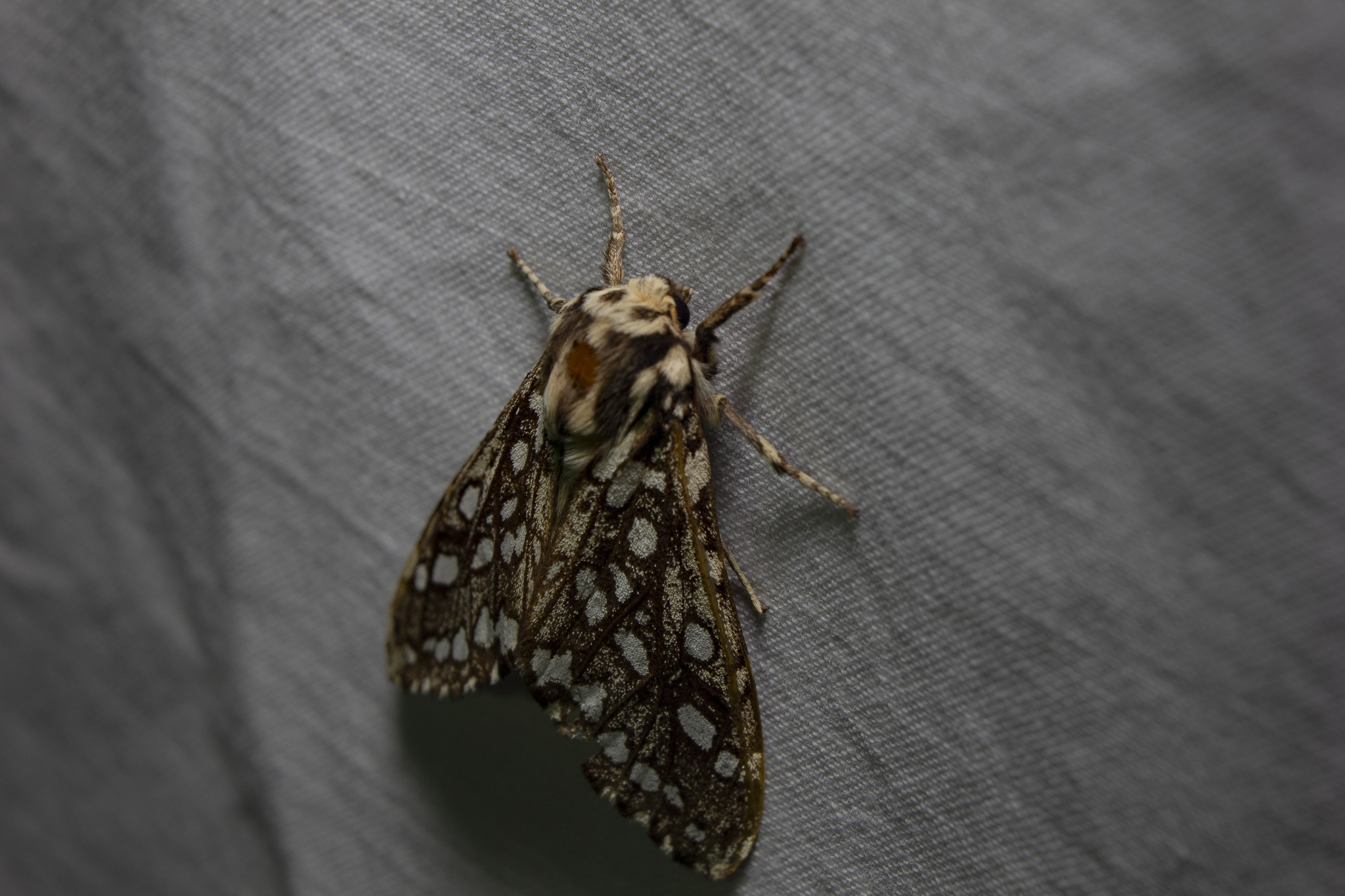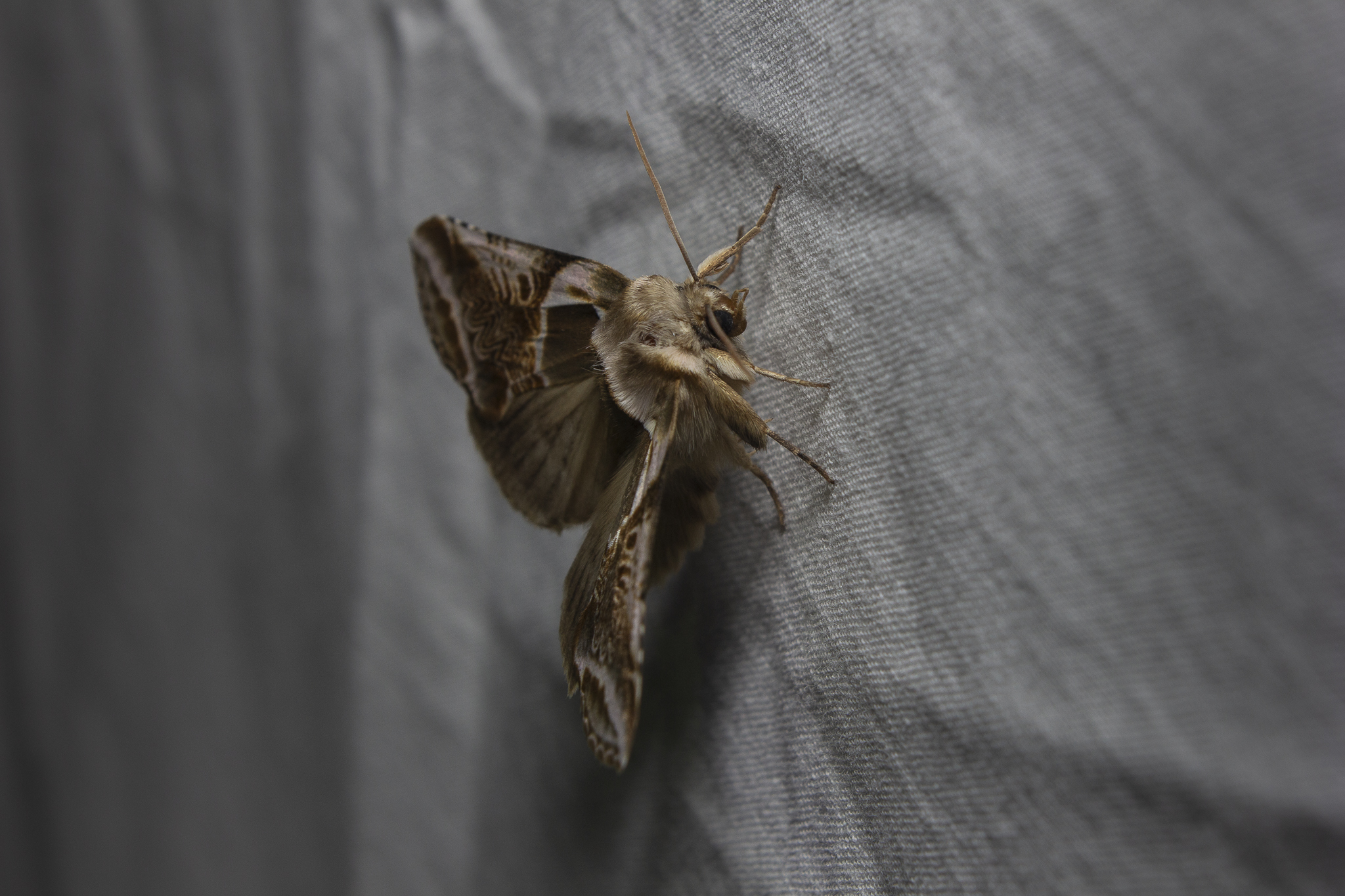Introduction/Abstract
When most people think of pollinators, they picture bees or butterflies. However, there’s a whole other world of insects and animals, like moths, that play a vital role as pollinators in our ecosystems. During National Moth Week, I attended a night event at Bellevue Botanical Garden that expanded my view on how incredible moths are! Side note: If you want a closer look at some of the pictures, click on them to open a bigger picture!
What is National Moth Week?
National Moth Week is a global citizen science event held annually that celebrates moth diversity and promotes public engagement with nocturnal pollinators. It coordinates activities from backyard observations to large scale events like the one I attended. Moth Week encourages people to observe and appreciate these overlooked insects.
Hands On Wildlife Learning
While the event ran all day, I arrived as the sun was setting, just in time for the moth sheeting. There, I was able to meet and talk to experts to learn more about local biodiversity and other opportunities to expand my learning. Eight tables were set up at the event, each with experts, naturalists, or volunteers educating and sharing the interactive displays.
A few highlights:
- Live caterpillars and moths that people could interact with and get a closer look at.
- Games that helped explain the moth sheeting set up. It felt tailored towards children but very fun to see!
- A table focused on pollinator gardens! People were able to take home a packet with native plant seeds to support moths and other pollinators.
- Slightly unexpected but interesting table on bats! The ranger there explained their role as moth predators and their importance in the food chain.
The Washington Department of Fish and Wildlife had a large presence during the event. Many of the educators at the tables were rangers from the department. It was awesome to have a first hand experience with the education that the Department of Fish and Wildlife helps promote.
The Magic of Moth Sheets
Around 10:30, the last light faded from the sky and I made my way to the moth sheeting setup. The moth sheeting was very simple, just a large white sheet with a bright light to attract moths. At first, there were just a few moths. The light had just faded and moths were just beginning to become active. After spending just a few minutes, I continued to explore the tables and chatted with some of the rangers at the event. When I went back to the sheet just a bit later, I was amazed to see just how many moths were arriving. I was very happy that a naturalist was by the moth sheet and was able to identify many, if not all of the moth species. There were even some non moth invertebrates like June bugs, flies, and mosquitos. This set up gave me the chance at a close up view of moth diversity in action! It also sparked a lot of questions and the opportunity to ask questions and get answers from very knowledgeable experts at the event.
Hooked on Macro Photography
One of the things I was most excited about was the chance to develop more of my photography skills! I brought my camera and used a macro extension tube, a cheap way to take close up shots without a dedicated macro lens. I still have a lot to learn, but photographing these insects let me see textures, patterns and colors I never could have seen with my eyes alone. The event inspired me to explore macro photography more seriously. Unfortunately for my wallet, I have added a proper macro lens to my wishlist!
A Path to Invertebrate Education
This event also gave me a chance to ask questions about other bug related events and opportunities in my are. I left with a list of future activities and a better understanding of how I can get involved with community science programs and help promote local biodiversity. As WILD Education grows, I see so much potential in sharing these experiences. I had many moments where my curiosity was able to wander and get answers. I hope that everyone might be able to find a similar experience.
The Value of Community Events
This event was a great reminder of what WILD Education strives to be. I would love to be able to bring interactive and accessible wildlife learning to everyone! Whether it’s lesson plans, photography, or setting up hands on experiences, I find myself wanting to play bigger role in wildlife learning. Programs like National Moth Week offer people an easy way to the world of invertebrates. I think they’re especially valuable to adults, especially young adults like myself. It was so much easier to connect to others while learning a lot about the world around us. It’s getting harder and harder to meet and connect with people in person in this digital age. Although I see the value of technology in wildlife education, I want to find a balance with helping create those in person connections.
I also want to mention that this event was completely free! Many of these state funded events are free, letting anyone join in and make these connections, whether it’s to nature or the rest of your community. As someone who recently moved to the area, I value both and appreciate the low barrier of entry.
Conclusion
If you’ve never thought too much about moths, I encourage you to find local groups that do these activities. Whether you’re a photographer, a teacher, or just someone curious about nature, nighttime insect exploration is well worth looking into. I’m planning on creating my own moth sheet in my patio. After some quick research, I don’t see myself spending more than $50 dollars! I may not be the most knowledgeable with insects or create the best mothing set up, but it’s important to not let that stop me from exploring different activities! After all, you don’t need to be an entomologist to appreciate moths and the diversity of bugs in your own backyard.
References and Further Research
National Moth Week. (n.d.). https://nationalmothweek.org/








